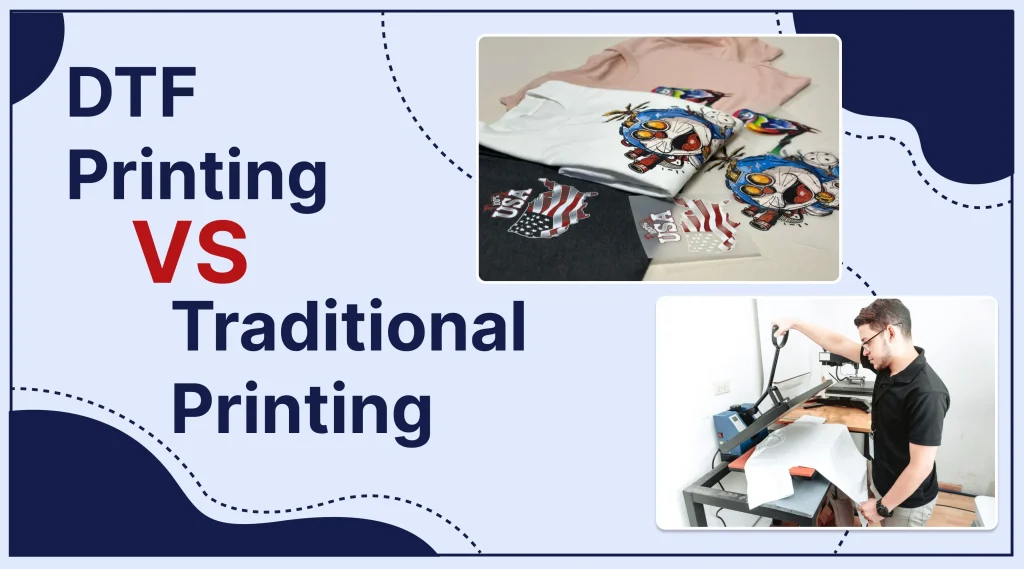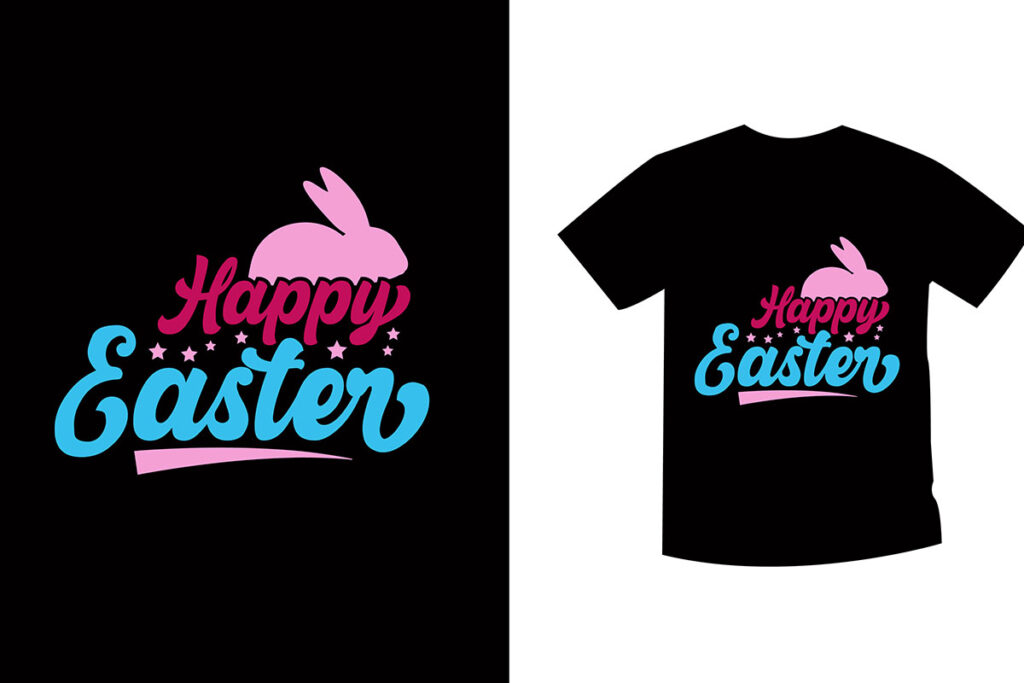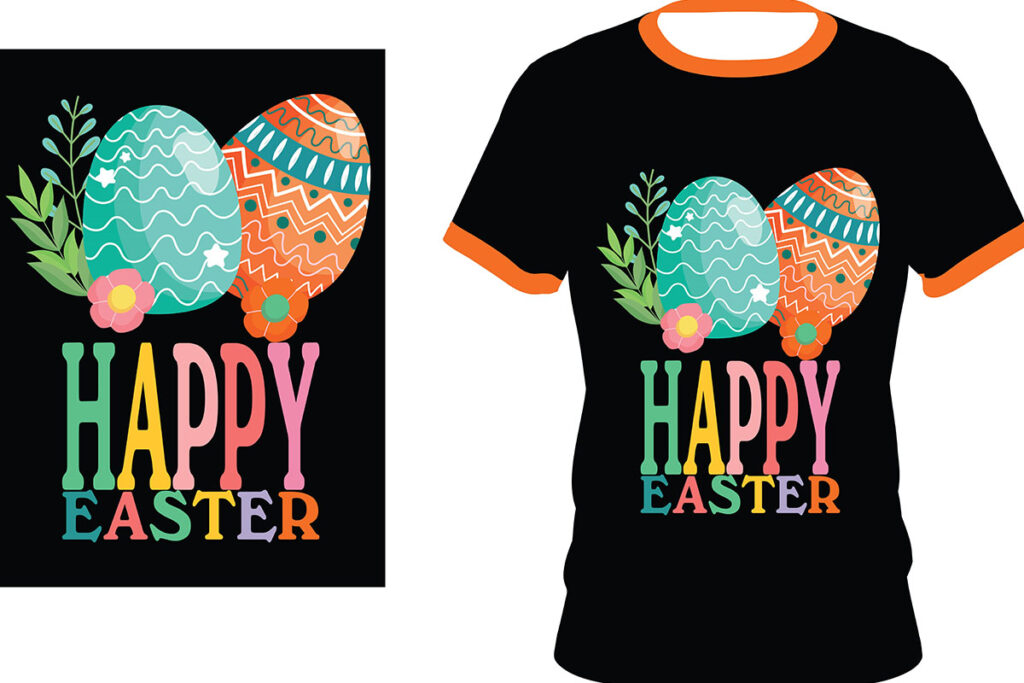When considering the myriad options for fabric printing, the debate between DTF transfers vs. traditional printing emerges as a significant topic. In an ever-evolving market where quality and efficiency are paramount, understanding how Direct to Film (DTF) printing stacks up against conventional techniques like screen printing and direct-to-garment (DTG) printing is crucial. DTF printing offers numerous advantages, including vibrant color reproduction and adaptability across various fabrics, making it an increasingly popular choice among textile manufacturers. On the other hand, traditional printing techniques have their proven track record, particularly in large-volume orders and established workflows. This article will delve into the key differences between DTF transfers and traditional printing methods, allowing businesses to make informed decisions based on their specific needs.
In the realm of textile personalization, the discussion often centers around DTF (Direct to Film) printing and established methods such as traditional screen and direct-to-garment printing. Both approaches deliver unique benefits and drawbacks which can greatly influence production decisions. While modern advancements have propelled DTF to the forefront offering increased flexibility and print quality, traditional printing techniques continue to hold their ground due to their reliability in high-volume applications. As brands navigate the complexities of fabric printing, understanding these various methodologies is essential for optimizing outcomes in design and manufacturing. This exploration will provide insights into the merits of DTF versus conventional printing methods, framing a comprehensive picture of today’s printing landscape.
Understanding DTF Printing Technology
Direct to Film (DTF) printing represents a transformative step in the realm of fabric printing, allowing for intricate designs and vibrant colors to be easily transferred onto a variety of materials. The DTF process utilizes a digital printer to transfer an image onto a specialized film that is later applied to the fabric using heat and pressure. This approach not only enhances the quality of prints but also allows for quick changes in design, making it an ideal choice for businesses needing flexibility in their production.
The versatility of DTF printing means it can accommodate a wide range of fabrics, from cotton to polyester blends, which is a significant advantage over traditional printing methods that have limitations regarding material compatibility. The ability for DTF printing to yield exceptional detail and color saturation makes it a superior option for new and emerging fashion trends that demand high-quality prints in small runs.
Benefits of Choosing DTF Transfers
One of the most compelling advantages of DTF transfers lies in its cost-effectiveness, particularly for small batch orders. Unlike screen printing, which incurs significant setup costs, DTF printing allows businesses to avoid these expenses, thus enabling more manageable investments in low-volume jobs. This makes DTF an attractive option for startups or those venturing into personalized apparel without the burden of heavy financial outlay.
Moreover, the speed of DTF printing stands out as a critical advantage. The streamlined process eliminates the lengthy setup times associated with traditional methods like screen printing, allowing businesses to fulfill orders more rapidly. This efficiency can lead to improved customer satisfaction and potentially higher sales as businesses can offer quicker turnaround times without sacrificing quality.
DTF Transfers vs. Traditional Printing Techniques
When comparing DTF transfers to traditional printing techniques such as screen printing and direct-to-garment (DTG) printing, several distinctions emerge. While screen printing holds value for high-volume runs, its labor-intensive nature and limitations on intricate designs position DTF as a superior alternate for complex graphics. DTF excels in producing detailed images with a vibrant color palette, making it ideal for customized and intricate designs.
On the other hand, DTG printing offers similar benefits to DTF but often at a higher cost, particularly for larger volumes. DTG machines can accommodate a range of colors but may struggle with consistency over extensive runs. Thus, while both DTF and DTG can achieve full-color images, DTF’s cost-effectiveness and capability for diverse fabric types cater to a broader market segment. This intersection makes DTF a compelling choice for contemporary printers aiming to expand their capabilities.
Latest Innovations in DTF Technology
In a rapidly evolving industrial landscape, advancements in DTF technology have significantly improved print quality and durability. Recent innovations have led to better film adhesion and longer-lasting prints that can withstand multiple washes without fading—an area where traditional methods often fall short. Manufacturers are investing in technology that enhances both the efficiency and effectiveness of DTF printing, giving businesses fresh opportunities to innovate in their product offerings.
Furthermore, sustainability trends are emerging within DTF technology as new practices reduce waste and resource consumption. Unlike traditional printing techniques that often require significant water and materials, DTF operates with lower environmental impact, appealing to eco-conscious businesses and consumers alike. Such advancements illustrate that DTF is not only a modern solution for fast-paced production needs but also a method aligning with contemporary sustainability goals.
Exploring the Limitations of DTF Printing
Despite the numerous advantages of DTF printing, it’s important to recognize its limitations. One noteworthy challenge is the initial investment required for high-quality DTF printers and materials, which may deter smaller businesses from adopting this technique. Over time, as with any technology, the costs can become justifiable with the right volume of output, but the upfront burden can pose a barrier.
Additionally, while DTF excels in producing vivid colors and intricate designs, it may not always compete with the rich textures achievable through screen printing for certain applications. Businesses that prioritize fabric feel and texture might find traditional methods offer an unmatched quality that DTF cannot replicate due to differences in application processes.
Future of DTF Printing in the Fashion Industry
As we look toward the future of DTF printing within the fashion industry, its role is poised to expand as technological advancements continue to emerge. The increasing demand for personalized and unique clothing options suggests a growing market for DTF applications, as producers can more conveniently cater to consumer desires for custom apparel. This shift towards personalization aligns well with the DTF approach, paving the way for a promising future.
Moreover, with a heightened focus on sustainability and responsible manufacturing, DTF printing stands to benefit immensely. As the industry increasingly prioritizes eco-friendly practices, the low resource consumption and reduced waste associated with DTF will make it a preferred option over traditional methods. Overall, the combination of technological progress, market demand, and environmental consciousness is set to secure a brighter future for DTF printing in the coming years.
Frequently Asked Questions
What are the main differences between DTF transfers and traditional printing methods?
DTF transfers, or Direct to Film printing, use a digital process to transfer images onto fabric via heat, resulting in vibrant colors and detailed designs. In contrast, traditional methods like screen printing or direct-to-garment printing often involve more labor-intensive processes and can struggle with intricate gradients and color details.
What are the advantages of using DTF printing compared to traditional printing techniques?
The advantages of DTF printing over traditional techniques include cost-effectiveness for small orders, faster production times due to reduced setup, and the ability to achieve high-quality prints that feature vibrant colors and intricate details that may be challenging with screen printing.
Is DTF printing suitable for all types of fabrics, unlike traditional printing methods?
Yes, DTF printing is versatile and can adhere to a variety of fabrics, including cotton, polyester, and blends. This flexibility is an advantage over some traditional printing methods, such as screen printing, which may have fabric limitations.
How does the quality of DTF transfers compare to that of screen printing and DTG printing?
DTF transfers offer high-quality prints with vivid colors and fine details, comparable to DTG printing. However, screen printing may struggle with complex color gradients and detail intricacy, making DTF a favorable choice for quality-oriented projects.
What production speed can be expected from DTF transfers versus traditional printing methods?
DTF transfers typically provide a quicker turnaround due to faster setup processes compared to traditional methods like screen printing, which can be time-consuming for larger batches. This speed makes DTF a preferred option for urgent or small-run orders.
Are there any environmental benefits of choosing DTF printing over traditional printing techniques?
Yes, DTF printing is believed to have a lower environmental impact than traditional printing techniques. It generally requires fewer resources and generates less waste, making it a more sustainable option in the evolving landscape of textile printing.
| Aspect | DTF Transfers | Traditional Printing Methods |
|---|---|---|
| Overview | Innovative method using heat to transfer images from film to fabric; vibrant color reproduction and intricate detail. | Methods like screen printing and DTG remain popular, especially for larger orders; often less flexible for complex designs. |
| Process | Involves printing on film, applying adhesive, and heat pressing onto fabric; suitable for multiple wash cycles. | Screen printing involves creating a stencil and applying ink, while DTG prints directly onto the fabric. |
| Advantages | Cost-effective for small orders, fast production time, high-quality prints with intricate designs. | More economical for high volume prints, labor-intensive, struggles with gradients compared to DTF. |
| Innovations | Improvements in adhesion and wash durability; lower environmental impact expected. | Continues to evolve with better inks and processes, but may not have the sustainability benefits of DTF. |
Summary
DTF Transfers vs. Traditional Printing is an essential consideration in today’s fashion and textile industries. While DTF transfers leverage innovative techniques for vibrant prints and quick turnaround times, traditional methods maintain their relevance for larger production runs. The choice between these two printing technologies ultimately depends on specific needs such as order size, design complexity, and budget constraints. As technology advances, DTF printing is expected to become increasingly preferred for its versatility and cost-effectiveness, providing businesses with opportunities to meet modern demands. Understanding both methods empowers companies to make informed decisions that cater to their unique apparel printing requirements.



